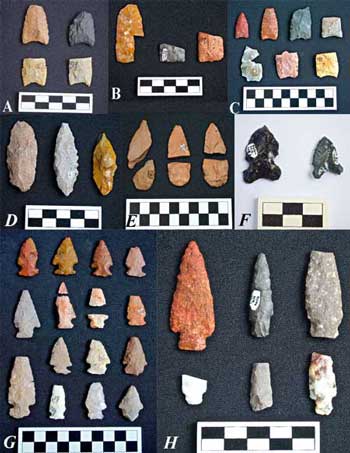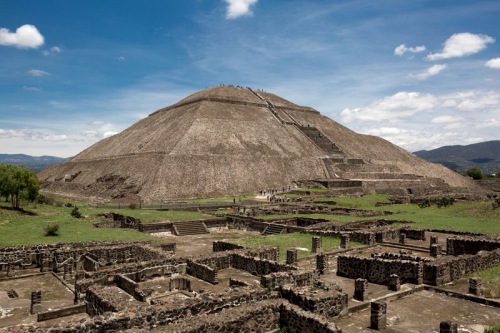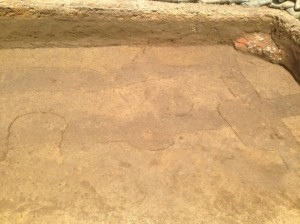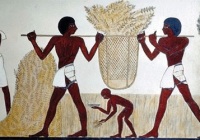This is another Article on crops and the Chaco Culture published in January with expanded information.
JLP
Original Article:
by Blake de Pastino
For more than a century, researchers have been studying the intricacies of Chaco Canyon — the cluster of settlements and multi-story “great houses” in northwestern New Mexico that, at its peak around the year 1100, may have been home to hundreds, if not thousands, of people.
Recently, researchers have been at odds over a simple, central question in the history of this monumental community:
How did the people of Chaco manage to grow food in such an arid environment?
According to new research, the answer is even simpler.
They didn’t.
Dr. Larry V. Benson, a former hydrologist with the U.S. Geological Survey and an anthropologist at the University of Colorado, has studied soil and other environmental records from the region, and concludes that Chaco Canyon was both too dry and too salty to grow corn or beans, two of the staple crops of the Ancestral Puebloans who lived there.
As a result, Benson proposes a new theory about how Chacoans fed themselves: They imported their food.
“The important thing about this study is that it demonstrates you can’t grow great quantities of corn in the Chaco valley floor,” Benson said of his new findings, in a press statement.
“And you couldn’t grow sufficient corn in the side canyon tributaries of Chaco that would have been necessary to feed several thousand people.
“Either there were very few people living in Chaco Canyon, or corn was imported there.”
Benson is the scientist behind many sometimes contentious anthropological findings around the West.
In 2013, he played a role in the discovery of petroglyphs in Nevada that were determined to be the oldest on the continent.
More recently, he concluded that the circular masonry feature at Mesa Verde National Park known as Mummy Lake wasn’t a reservoir, as many had thought, but a ceremonial structure.
Benson’s new research is a riposte to a study released in September that promised to “shake up” the field of Southwestern archaeology with its findings that Chaco Canyon’s soil was not too salty to farm, as Benson and others had previously asserted.
In fact, this research concluded, Chaco’s soil was rich in certain mineral salts, like calcium sulfate, that actually made it especially fertile for growing plants such as corn.
“One thing we can say with a great degree of certainty: The Ancestral Puebloans did not abandon Chaco Canyon because of salt pollution,” said Dr. Kenneth Tankersley, an anthropologist and geologist at the University of Cincinnati, in a press statement at the time.
But in his new paper, currently being published by the Journal of Archaeological Science: Reports, Benson answers Tankersley’s study with new data and arguments of his own.
First, he draws on tree ring data.
Cross-sections of trees are considered natural records of annual rainfall, with thick and thin rings corresponding to wet and dry years.
Using data from tree-core samples spanning 1,100 years, Benson notes that Chaco only experienced sufficient rainfall for growing corn about 2 percent of the time.
Regardless of the soil’s salt content, Benson writes, “this implies that an exceptional wet period did not prevail during Chaco’s heyday.”
As for the benefits of sulfur on maize crops, Benson argues that, while sulfur is an important nutrient in agriculture, it’s mainly useful in treating metallic sulfates in acidic soil, a condition that Chaco Canyon doesn’t have.
“The principal usefulness of sulfur in maize agriculture is its ability to reduce aluminum toxicity that often accompanies soil acidity, a problem that does not occur in the high-pH soils of the Chaco Canyon region,” Benson writes.
Moreover, in his own analysis of soil samples taken from the valley bottom and the side canyons that feed into it, Benson finds that levels of salt were indeed very high — at some points, higher than those found in seawater.
Considering that Chaco’s soil chemistry likely hasn’t changed much over the past 800 years, Benson concludes that Chaco Canyon was simply never suitable for farming on a scale large enough to have fed its population.
“I don’t think anyone understands why it existed,” he said of the cultural complex, in the press statement.
“There was no time in the past when Chaco Canyon was a Garden of Eden.”
In turn, Benson offers an alternative explanation for how the communities of Chaco got their food: It was imported from the Chuska Mountains, some 80 kilometers (50 miles) away.
The eastern slope of the Chuskas is known to have been home to a robust Ancestral Puebloan presence, he said, their numbers aided in part by the ample water provided by snowmelt.
Previous studies have estimated that as many as 17,000 people made their home on the Chuska Slope before the year 1100, and recent research has even found that those mountains were the source of the Chaco Canyon’s huge building timbers.
Given the other cultural connections between the two communities, Benson said, it’s plausible that the Chuskas served as what he called “Chaco’s breadbasket.”
“There were timbers, pottery and chert coming from the Chuska region to Chaco Canyon, so why not surplus corn?” Benson said in the statement. [Read more about trade of exotic goods in Chaco: “Bones of Exotic Macaws Reveal Early Rise of Trade, Hierarchy in Chaco Canyon”]
The nature of Chaco’s agricultural environment, and how Ancestral Puebloans managed to thrive within it, remain open questions for now.
But Benson suggests that, in addition to Chaco’s natural chemistry, the relationship between these two communities in pre-contact New Mexico also deserves closer study.
“Perhaps it is time to reassess Chaco Canyon as a self-sustaining bread basket and turn to new studies of the prehistory of the Chuska Slope and its connection to Chaco Canyon,” he writes.
Tankersley and his colleagues have not yet been contacted for a response.















